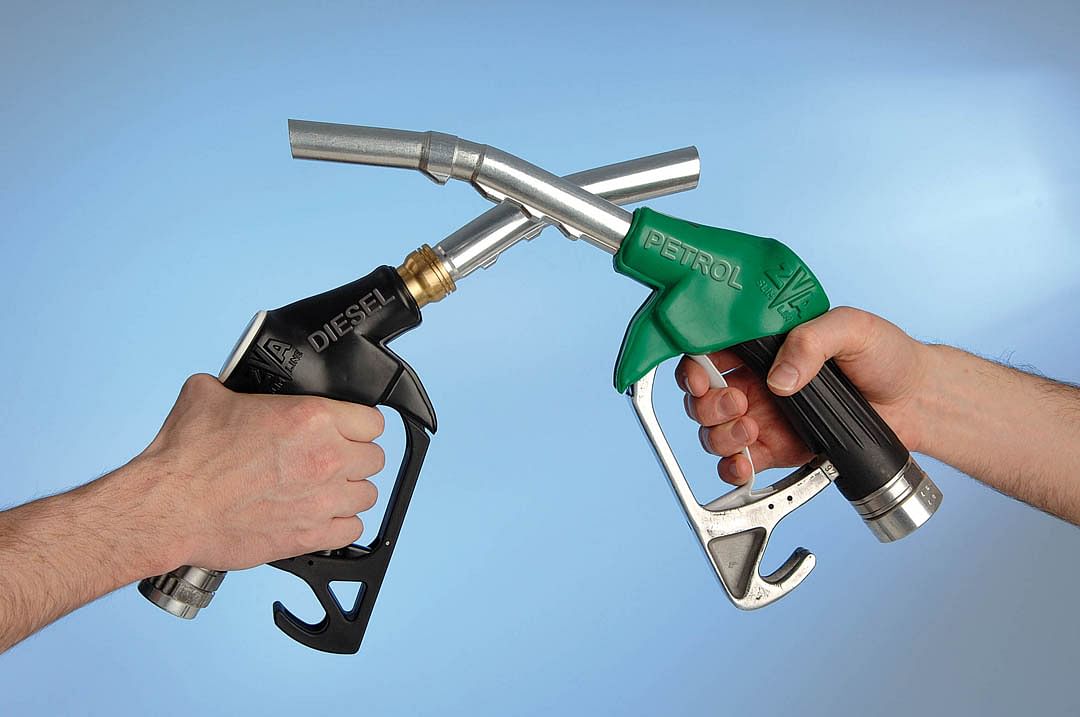Oil’s not well for Indian motorists: petrol and diesel prices hit a new high
Motorists in Mumbai have to shell out Rs 81.69 for a litre of petrol and Rs 68.89 for diesel while Delhiites pay Rs 73.83 and Rs 64.69 respectively.
Dynamic pricing or daily fuel revision, which kicked in on June 16, 2017, continues to give considerable heartburn to scores of motorists in India, on two-, three-, four and more set of wheels. The price of petrol has scaled a new high of Rs 81.69 a litre in the financial capital of Mumbai with diesel also keeping pace with an all-time high of Rs 68.89. Petrol price is now at a four-year high in Mumbai – on September 14, 2013, petrol cost Rs 83.62 while diesel on that day was priced at Rs 58.86.
As of today, motorists tanking up on petrol pay Rs 73.83 in New Delhi, Rs 76.54 in Kolkata, Rs 76.59 in Chennai and Rs 81.69 in Mumbai. And those who fill diesel have to shell out Rs 64.69 in New Delhi, Rs 67.38 in Kolkata, Rs 68.24 in Chennai and Rs 68.89 in Mumbai.
India Auto Inc on a high but rising fuel prices may play party pooper in FY2019

Before June 2017, fuel prices were revised every fortnight depending on the international crude oil price fluctuations. However, even when Brent crude prices were at a record low, Indian motorists never got the full benefit as a result of high excise tax rates levied by state governments. From June 2017 onwards, daily price revisions – usually upwards – in the form of 10-20 paise hikes were effected. While this did not garner consumer attention due to the small value involved, the fact of the matter is that over a month the daily price hikes add close to Rs 3 or more to the price of a litre of fuel.

Motorists never benefited from global crude price reduction
India, as per a PTI report, has the highest retail prices of petrol and diesel among South Asian nations as taxes account for half of the retail rates. The government had raised excise duty nine times between November 2014 and January 2016 to shore up finances even as global oil prices fell. Excise tax was cut just once in October 2017 by Rs 2 a litre.
Subsequent to that excise duty reduction, the Centre had asked states to also lower VAT but only four– Maharashtra, Gujarat, Madhya Pradesh and Himachal Pradesh – reduced fuel prices while others ignored the call.
This contra-movement in fuel prices came at a time when international crude oil prices had come down significantly. On March, 1, 2014 global crude cost $108.6 per barrel (Rs 6,860), while on September 15, 2017 it could be bought at $54.58 (Rs 3,447). It helps to know that the rupee-dollar exchange rate for the same period was fairly stable at Rs 61.76 and Rs 63.90 respectively at the time.
One bbl or barrel is the unit of volume for crude oil and petroleum products and equals 42 US gallons or 35 UK (imperial) gallons, or approximately 159 litres.
The central government had cut excise duty by Rs 2 per litre in October 2017, when petrol price reached Rs 70.88 per litre in Delhi and diesel Rs 59.14. Because of the reduction in excise duty, diesel prices had on October 4, 2017 come down to Rs 56.89 per litre and petrol to Rs 68.38 per litre. However, a global rally in crude prices pushed domestic fuel prices far higher than those levels.
It is understood that the excise duty cut in October 2017 cost the government Rs 26,000 crore in annual revenue and about Rs 13,000 crore during the remaining part of FY2018. Between November 2014 and January 2016, the excise duty hike on petrol and diesel, on nine occasions, effectively took away the gains arising from plummeting global oil prices. Overall, duty on petrol was hiked by Rs 11.77 per litre and that on diesel by 13.47 a litre in those 15 months, which helped the government's excise duty mop up more than double the amount to Rs 242,000 crore in 2016-17 from Rs 99,000 crore in 2014-15.

Can fuel prices go down?
The potential for petrol and diesel price being reduced substantially is always there, but for the high level of excise duty (charged by the Central government) and Value Added Tax (by state governments).
For instance, in Delhi, petrol costs Rs 73.83 a litre today (April 2) which includes Rs 19.48 excise duty and Rs 15.70 VAT. This adds up to Rs 35.18 a litre, which is nearly half the final price a motorist pays for petrol in the capital city.
Likewise, diesel costs Rs 64.69 a litre which includes Rs 15.33 excise duty and Rs 9.53 VAT which adds up to Rs 24.86.
The Indian automobile across the passenger vehicle, commercial vehicle and two-wheeler segments is set to declare its best-ever sales figures in the just-ended FY2018. Sharply rising fuel prices could put a spanner in the wheel of growth or is it a subtle message to Indian motorists to think electric?

PETROL PRICE IN INDIA VERSUS KEY GLOBAL MARKETS

RELATED ARTICLES
SIAM Conclave Explores Sustainable Strategies for Automotive Logistics
Stakeholders discuss multimodal transport, digital innovation, and sustainable practices to improve efficiency and resil...
Varroc Appoints Padmanabh Sinha as Independent Director
Sinha returns to Varroc’s Board with over 25 years of investment experience across private equity and technology.
Railways To Introduce More Specialized Wagons For Vehicle Transportation: Hitendra Malhotra
Hitendra Malhotra, a member of the Railway Board for Operations & Business Development at the Ministry of Railways noted...





 By Autocar Professional Bureau
By Autocar Professional Bureau
 02 Apr 2018
02 Apr 2018
 18185 Views
18185 Views





 Sarthak Mahajan
Sarthak Mahajan


 Shruti Shiraguppi
Shruti Shiraguppi

 Kiran Murali
Kiran Murali

